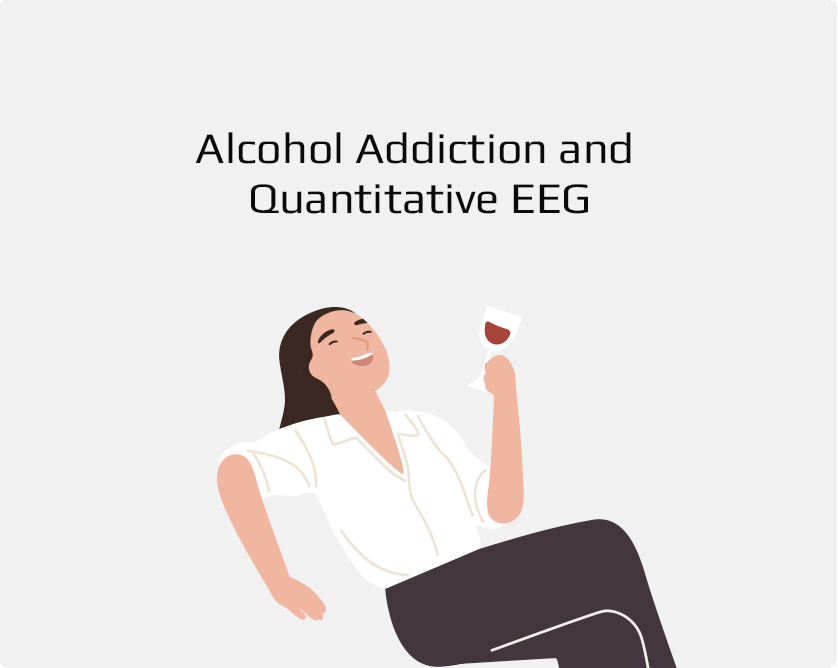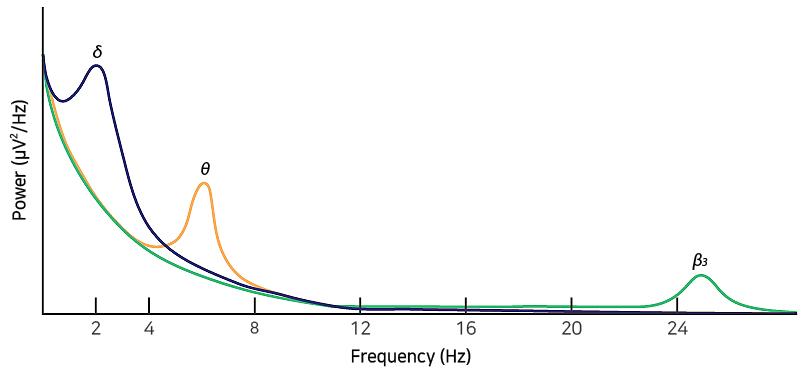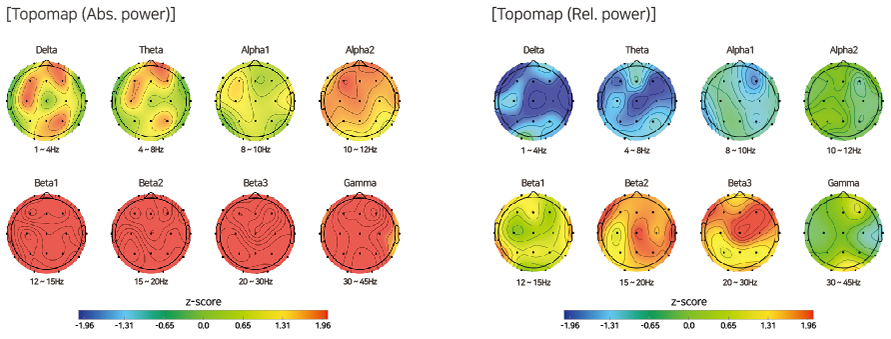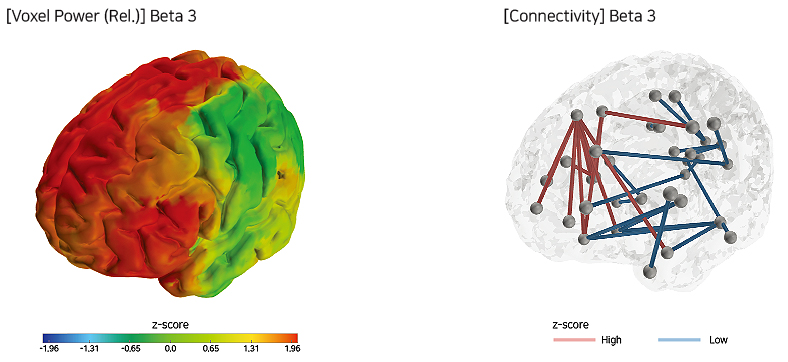
ALCOHOL ADDICTION and QEEG
Alcohol addiction is a disorder in which mental, physical, and social function is impaired due to excessive drinking.
Alcohol is a substance that inhibits the cortex of the brain. Concentration and control ability decreases, and motor
functions are weakened. The repetitive cortical suppression caused by alcohol eventually results in a deterioration in
certain areas of function.
Quantitative EEG (QEEG) According to previous studies, the EEG seen in alcohol addiction is as follows.
Beta waves increase due to alcohol cravings.
In chronic alcohol addiction, slow waves, such as delta waves or theta waves, are increased due to decreased frontal
lobe function.

pattern, an excessive beta 3 wave.
Second pattern, an excessive theta wave in the frontal lobe.
Third pattern, an excessive Delta wave in the frontal lobe.
*This may be accompanied by a deficiency of alpha waves.
The use of QEEG in alcohol addiction is a pre-QEEG that measures the degree of craving symptoms and the degree
of decline in frontal lobe function, thereby monitoring the degree of recovery after treatment to increase the
treatment success rate.
CASE REVIEW
Participant information
– Age : 55/ Male / Diagnosed with alcohol addiction
– They only want to drink alcohol and are accompanied by a feeling of fear or anxiety.
| Band Power – Topomap

Compared to healthy people, an increase of beta 3 wave is shown in the frontal lobe.

Compared to healthy people, in the Power Spectrum and Component,
beta 3 wave is commonly observed in the frontal lobe.
| 3D VIEW

Compared to healthy people, an increase of beta 3 wave and Connectivity were shown in the frontal lobe.










